
Tsukune Hot Pot (Tori Dango Nabe)
Tsukune Hot Pot, or Tori Dango Nabe, is a Japanese hot pot recipe where ginger-flavored chicken meatballs are simmered in a dashi-based broth along with a healthy mix of tofu, vegetables, and mushrooms. Cooked at the table in a donabe clay pot, it’s a warm and comforting family-style dinner for fall and winter nights.
Ingredients
For the Broth
- 6 cups water
- 1 piece kombu (dried kelp) (12 g; 5 x 5 inches, 13 x 13 cm per piece)
- 3 Tbsp sake
- 2 Tbsp mirin
- 2 Tbsp soy sauce
For the Tsukune (Yields 23 1½-Inch Meatballs)
- 1 Tbsp ginger (grated, with juice; from a 3-inch, 7.5-cm knob)
- 3 green onions/scallions (reserve some for the dipping sauce)
- 1 lb ground chicken
- 1 tsp soy sauce
- 2 tsp sake
- ½ tsp Diamond Crystal kosher salt
- 1 large egg (50 g each w/o shell)
- 3 Tbsp potato starch or cornstarch
For the Hot Pot
- ½ head napa cabbage (small; 0.6–1.1 lb, 250–500 g; use ¼ head if your napa cabbage is large)
- 1 bunch shungiku (chrysanthemum greens) (8 oz, 227 g)
- 1 daikon radish (1 lb, 454 g)
- 1 carrot (5 oz, 142 g)
- 1 gobo (burdock root) (8 oz, 227 g)
- 1 Tokyo negi (naga negi; long green onion) (3 oz, 85 g)
- 1 package medium-firm tofu (momen dofu) (14 oz, 397 g)
- 1 package shimeji (brown beech) mushrooms (3.5 oz, 100 g)
- 8 shiitake mushrooms (3 oz, 85 g)
For Serving
- ponzu (for the dipping sauce)
- shichimi togarashi (Japanese seven spice) (optional)
- Japanese sansho pepper (optional)
- yuzu kosho (Japanese citrus chili paste) (optional)
Instructions
To Make the Kombu Dashi
- Gather all the broth ingredients.
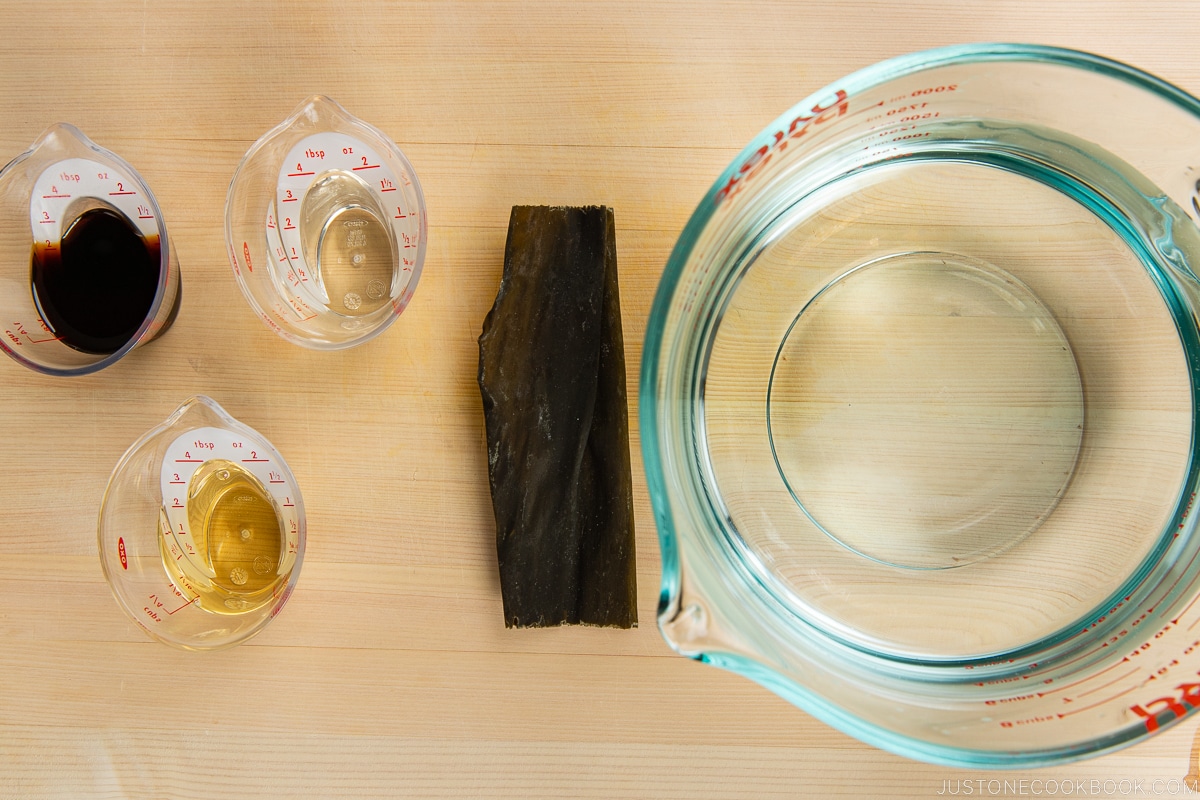
- Add 6 cups water and 1 piece kombu (dried kelp) to a large shallow pot (I used a Hario Donabe Ceramic Cooking Pot with a glass lid, large size). Set aside to let the kombu hydrate and release its flavor to the water. Meanwhile, prepare the tsukune (chicken meatballs) mixture and hot pot ingredients.
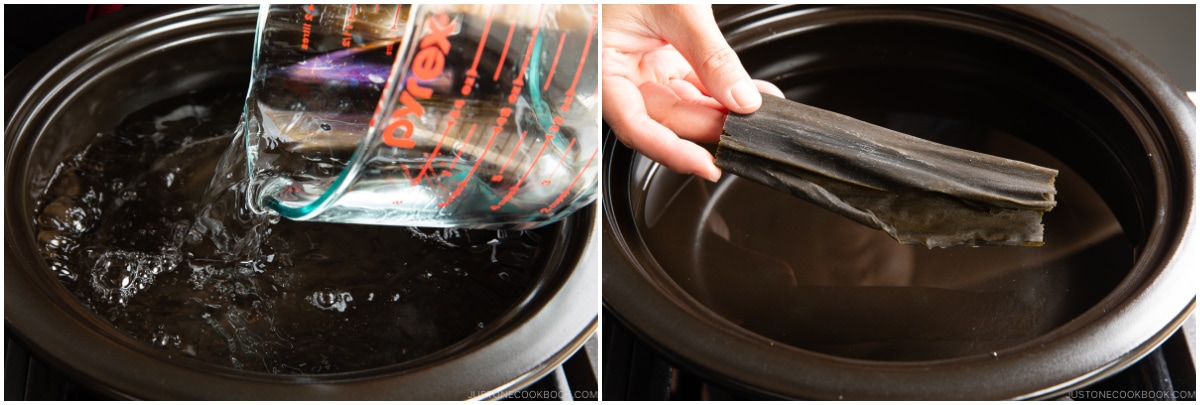
To Make the Tsukune Mixture
- Gather the ingredients for the tsukune (chicken meatballs).
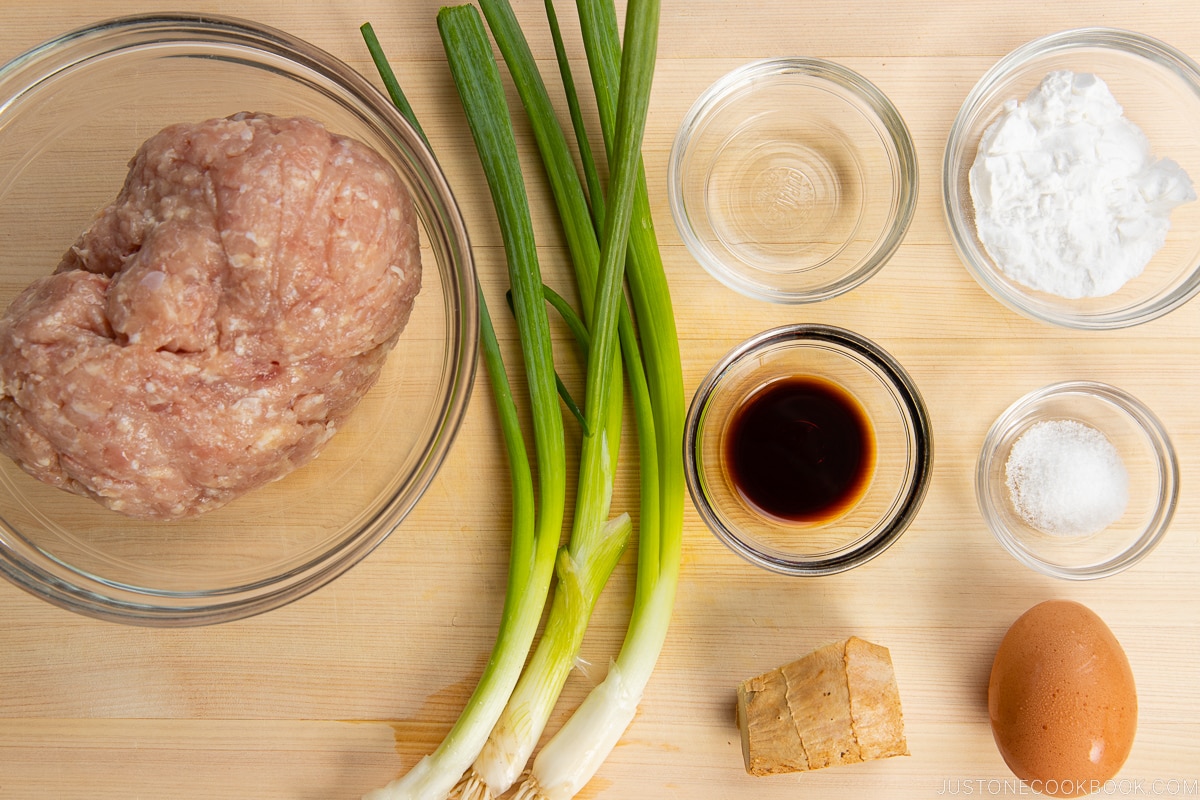
- Grate the ginger (I use a ceramic grater). Measure 1 Tbsp ginger, grated and with all the ginger juice.
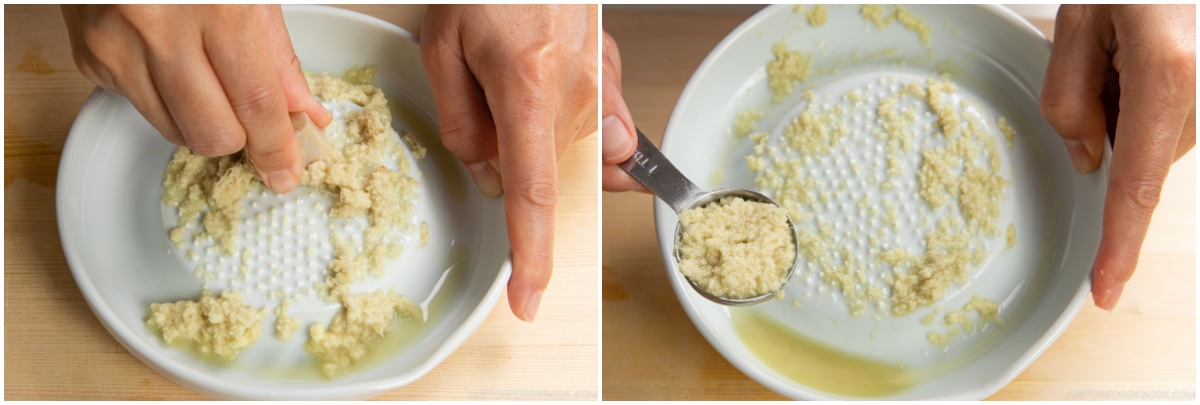
- Cut and discard the root ends and thinly slice 3 green onions/scallions.
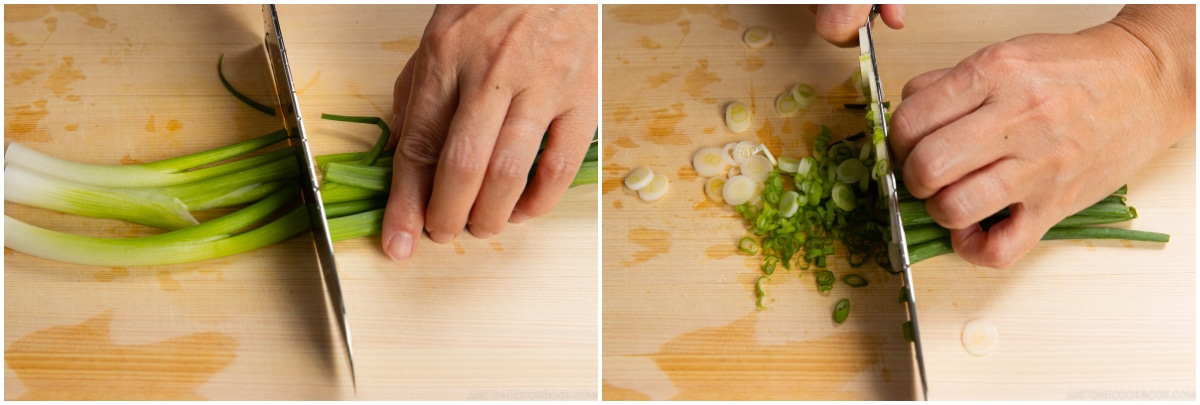
- In a medium mixing bowl, combine 1 lb ground chicken, the grated ginger, 1 tsp soy sauce, 2 tsp sake, ½ tsp Diamond Crystal kosher salt, 1 large egg (50 g each w/o shell), and 3 Tbsp potato starch or cornstarch.
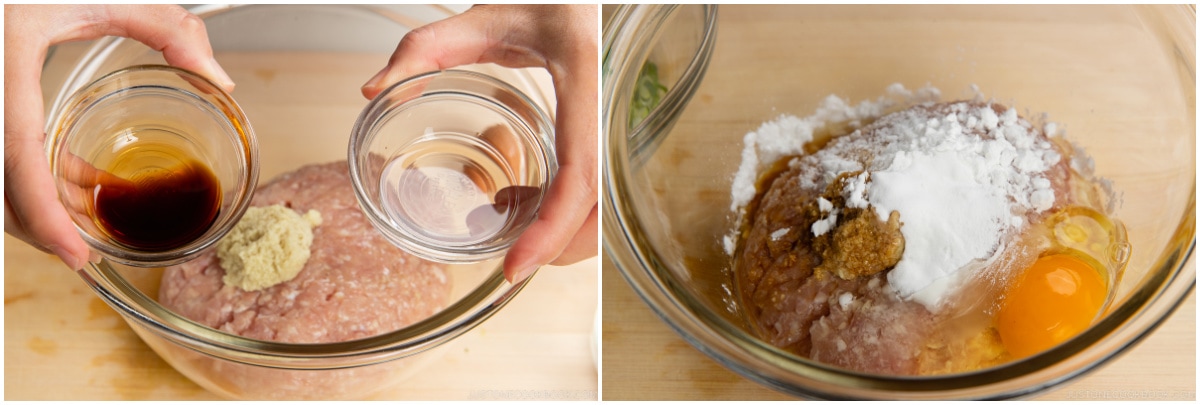
- Add the sliced green onions. With a pair of chopsticks, knead the mixture in a circular motion to combine until it looks pale in color. How many times do you have to stir? Roughly 100 times.
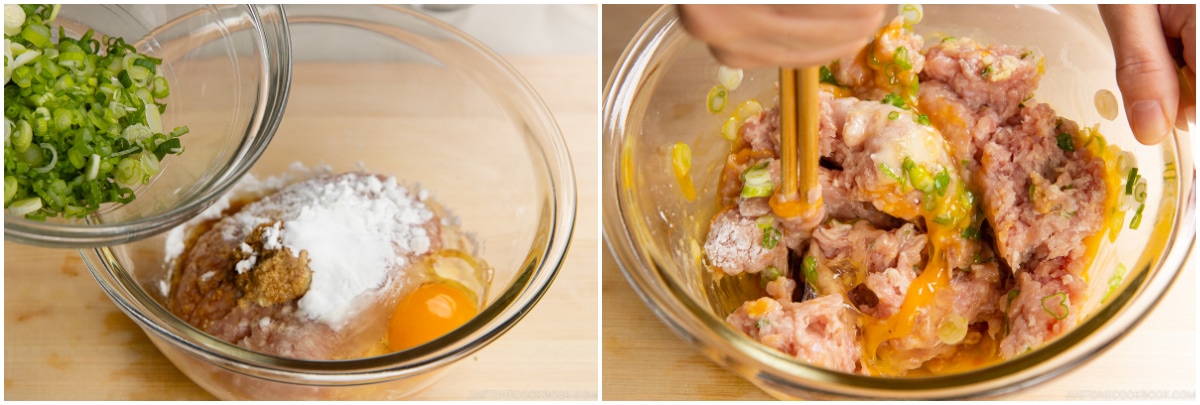
- After the mixture is well combined, cover the bowl with plastic and place in the refrigerator to firm up. Meanwhile, prepare the hot pot ingredients.
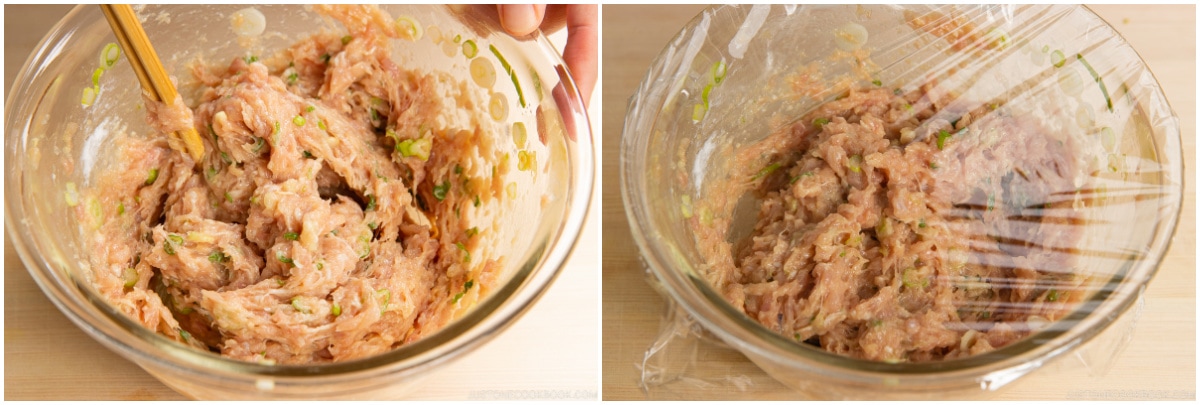
To Prepare the Hot Pot Ingredients
- Gather the hot pot ingredients.
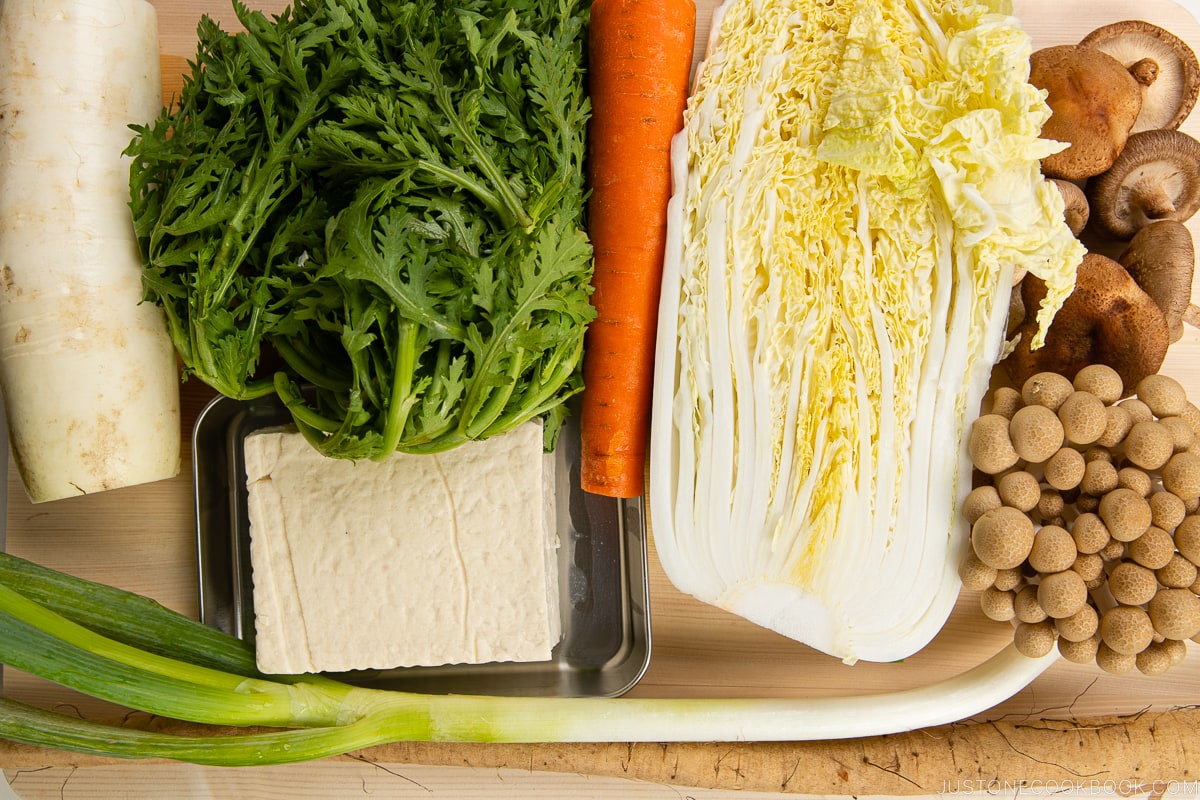
- Cut ½ head napa cabbage crosswise into pieces 2 inches (5 cm) long, and then cut the tough, thick pieces in half or thirds lengthwise.
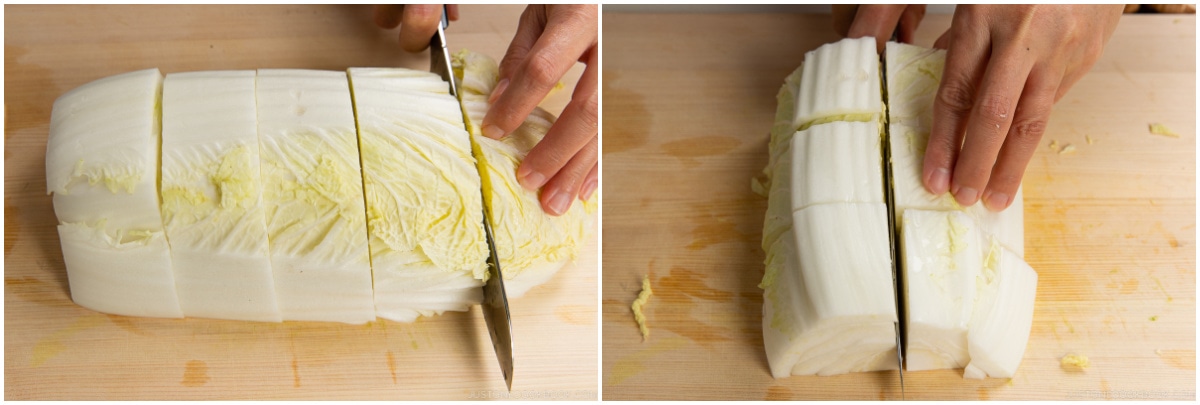
- Cut 1 bunch shungiku (chrysanthemum greens) crosswise into pieces 2 inches (5 cm) long.
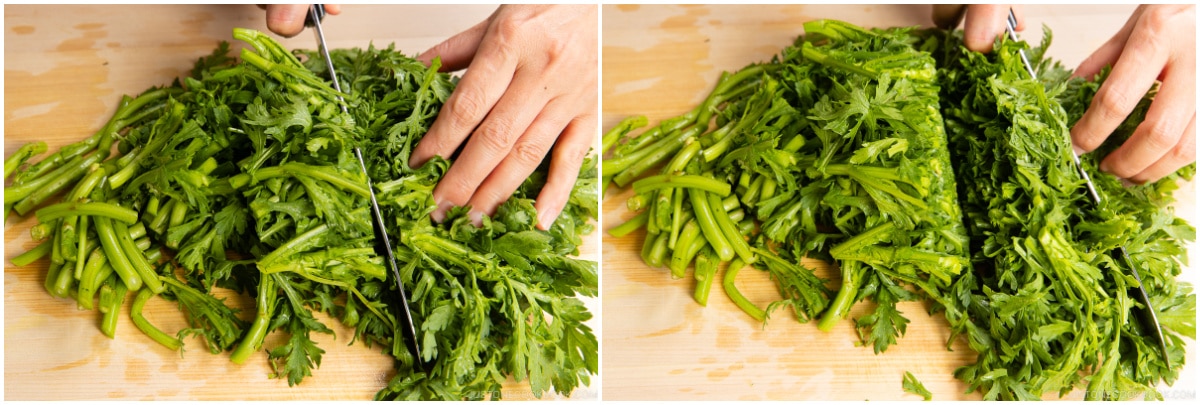
- Using a vegetable peeler, remove the outer skin of 1 daikon radish. Then, use the peeler to slice the daikon into superthin strips or ribbons.
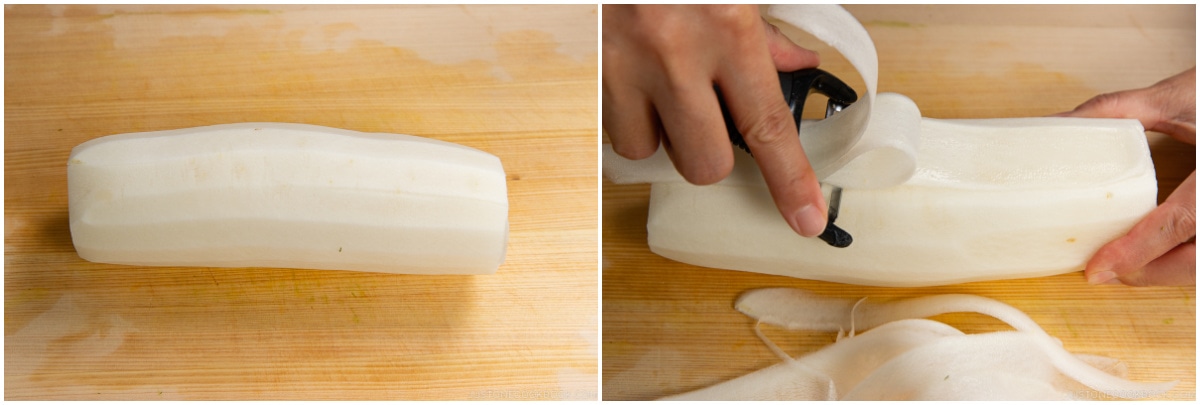
- Using the vegetable peeler, remove the outer skin of 1 carrot. Then, use the peeler to slice the carrot into superthin strips.
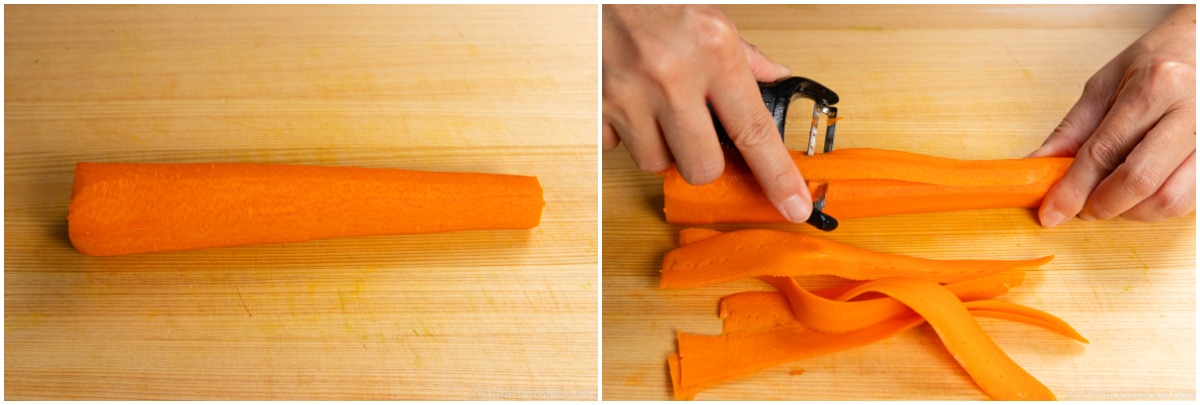
- Using the vegetable peeler, remove the outer skin of 1 gobo (burdock root). Then, use the peeler, slice the gobo into superthin strips. Soak the strips in water for 5 minutes and drain well.
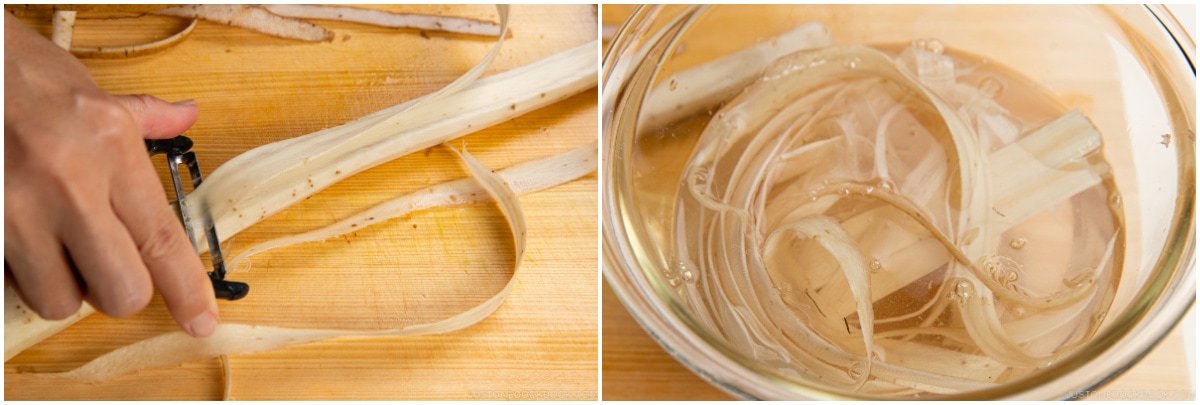
- Cut 1 Tokyo negi (naga negi; long green onion) diagonally into ½-inch (1.3-cm) pieces.
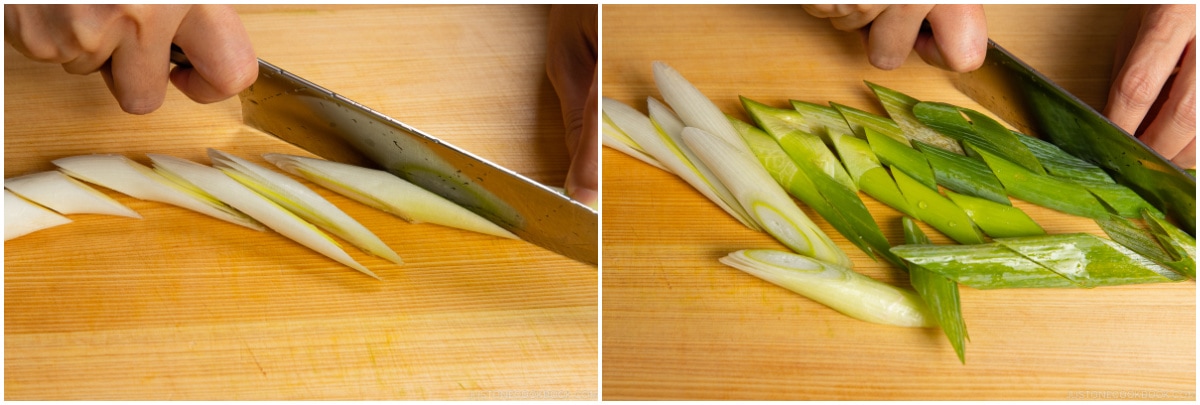
- Cut the block of 1 package medium-firm tofu (momen dofu) into thirds widthwise and then cut each piece into ¾-inch (2-cm) slices.
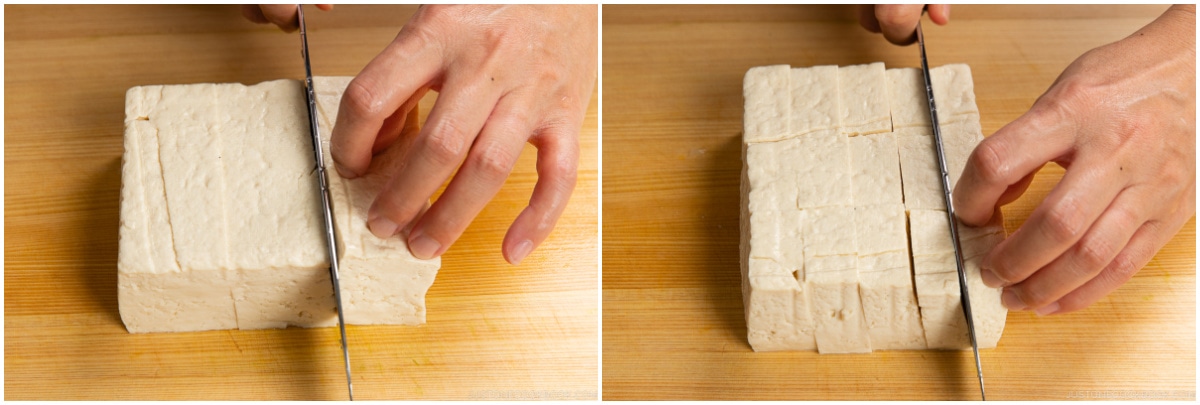
- Cut off and discard the root ends of 1 package shimeji (brown beech) mushrooms and the stems of 8 shiitake mushrooms.
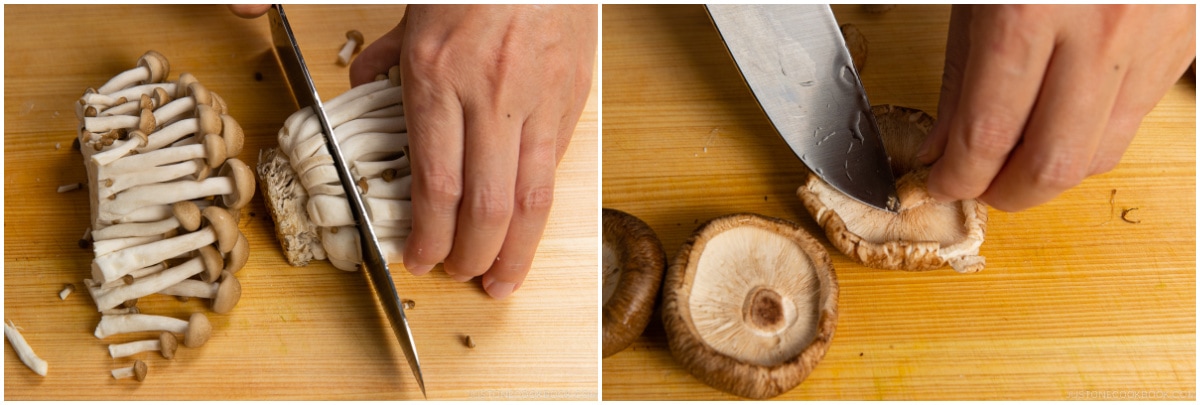
- Optionally, you can cut a flower pattern on the shiitake mushroom caps: First, cut a sliver off the top of the mushroom cap by making 2 incisions in the shape of a “V“. Bevel these cuts toward each other by inserting the knife diagonally. Make a second cutout in the same manner to form an “X“ with the first cutout. You can keep this X pattern or add one or two more cutouts. Watch my shiitake hanagiri video that demonstrates this Japanese cutting technique.
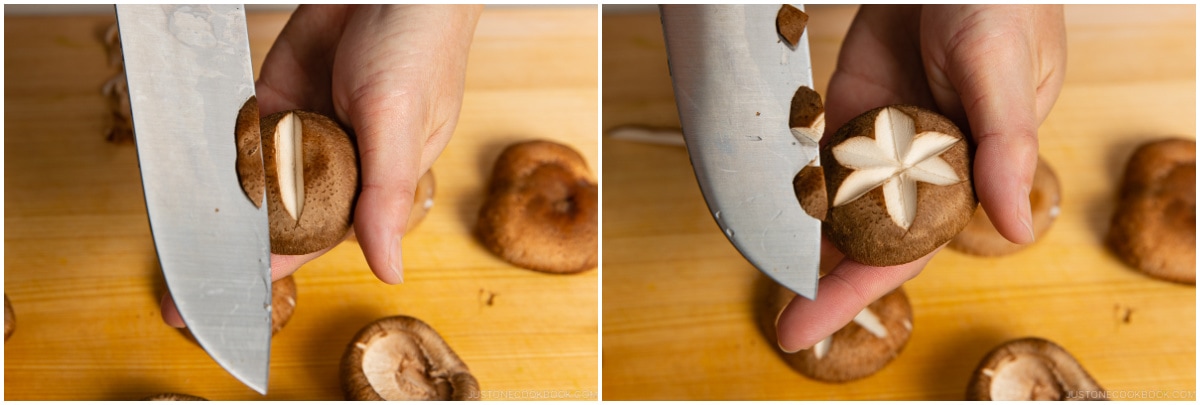
- Assemble all the cut ingredients on a platter or multiple plates. Set on the dining table.
To Prepare the Broth
- Set the pot with the water and kombu on the stove and turn the heat to medium low. Slowly bring it to a bare simmer, over about 10 minutes. Don‘t use high heat. It‘s important to gradually heat up the stock so the kombu has plenty of time to release its flavor. Just before the dashi starts simmering, remove the kombu from the pot. If you leave the kombu in the pot, the dashi will become slimy and bitter. Tip: You can repurpose this spent kombu to make Homemade Furikake (rice seasoning) or Kombu Tsukudani (simmered kombu).
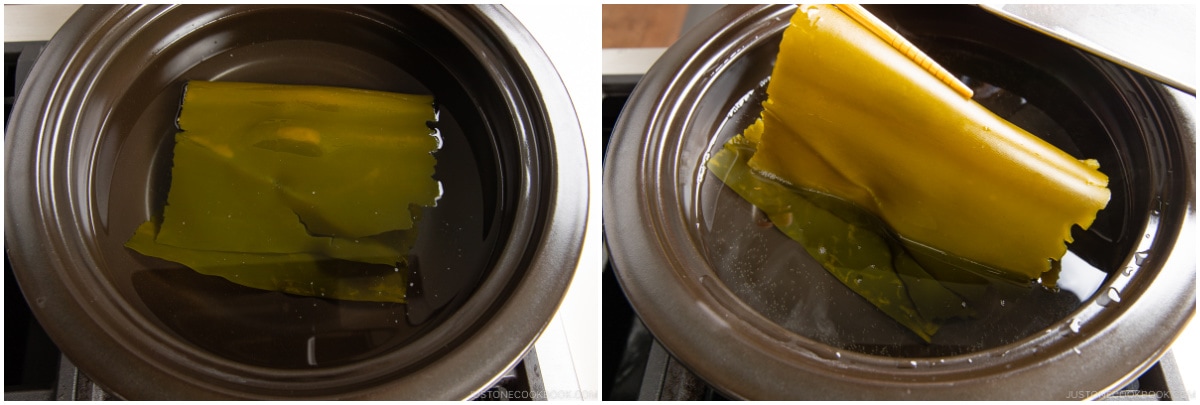
- Add 3 Tbsp sake, 2 Tbsp mirin, and 2 Tbsp soy sauce to the dashi and mix together. Bring the broth to a boil on medium heat.
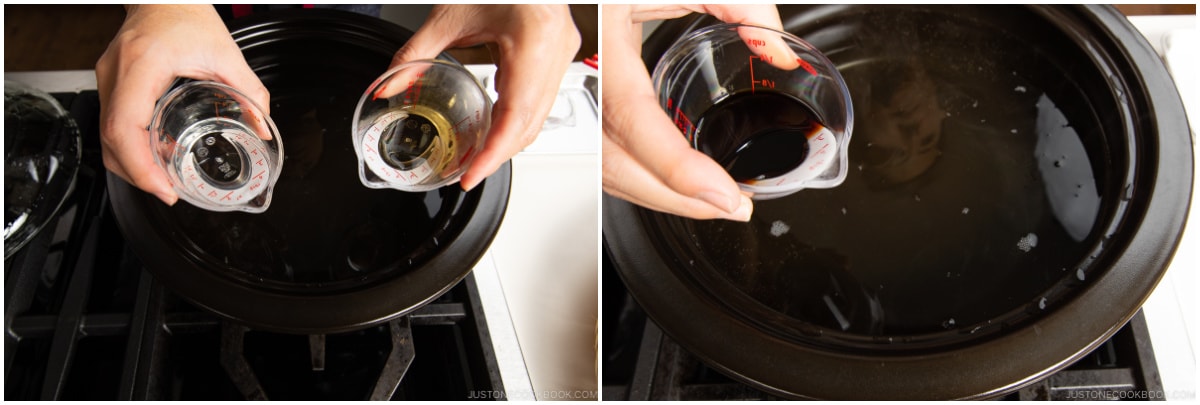
To Cook the Tsukune
- Once boiling, add the gobo strips and cook, covered, for 3 minutes.
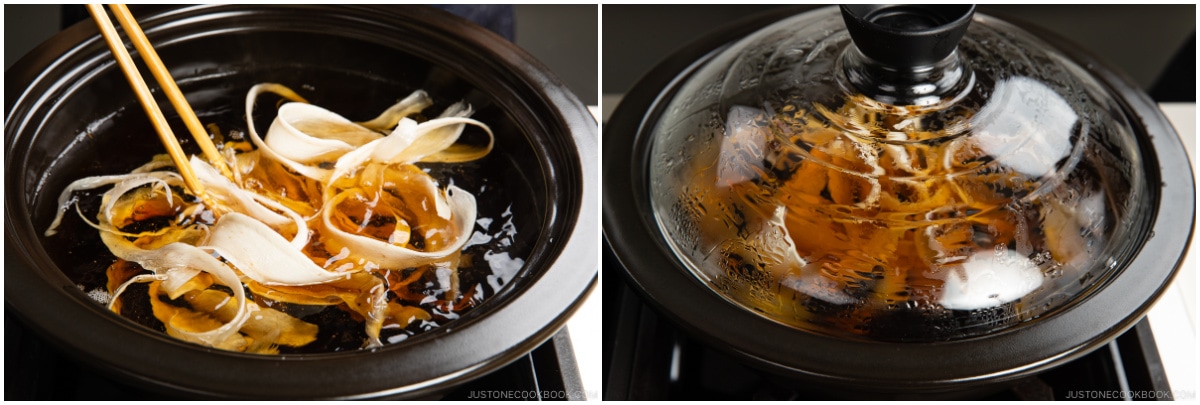
- Using a (1½ Tbsp) medium cookie scoop, form a meatball with the tsukune mixture and add it to the simmering broth. Repeat with the rest of the tsukune mixture.
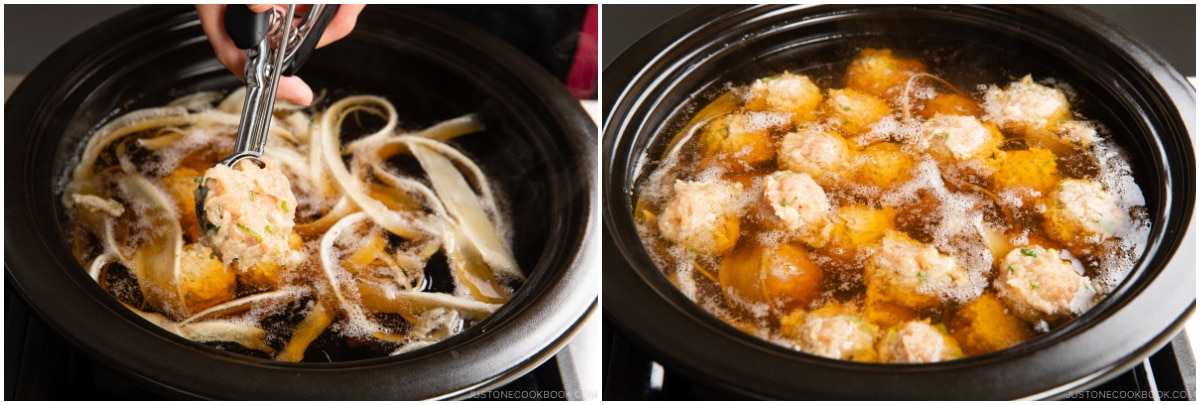
- If you don‘t have a cookie scoop, use two spoons greased with oil. With one spoon, scoop a small portion of the mixture that‘s a bit smaller than a golf ball. Then, use the other spoon to scoop up the mixture from the first spoon. Repeat this action once more and you’ll get a meatball with a smooth surface and rounded shape.
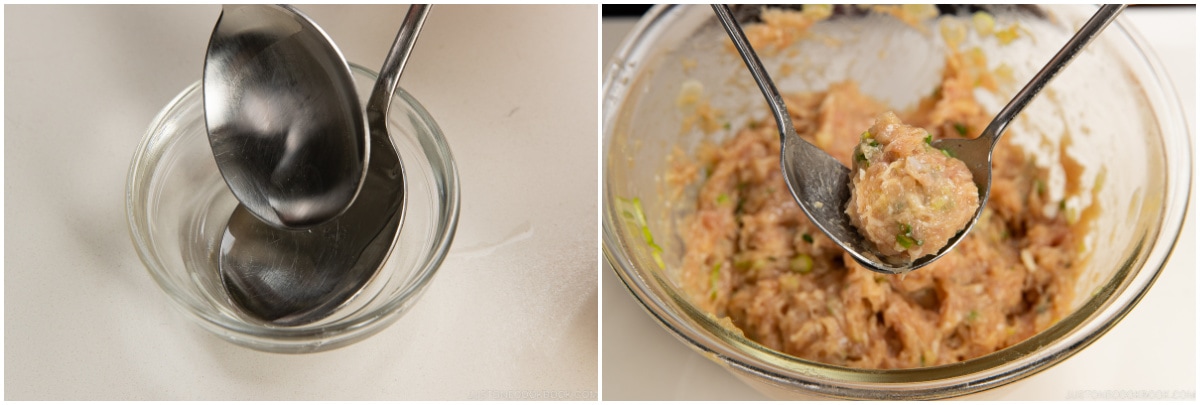
- Once all the meatballs are in the broth, cover the pot and cook for 7–8 minutes. The meatballs will float on the surface when they are almost cooked through. To be sure, use an instant-read thermometer to check that the internal temperature of the meatballs has reached 165ºF (74ºC).
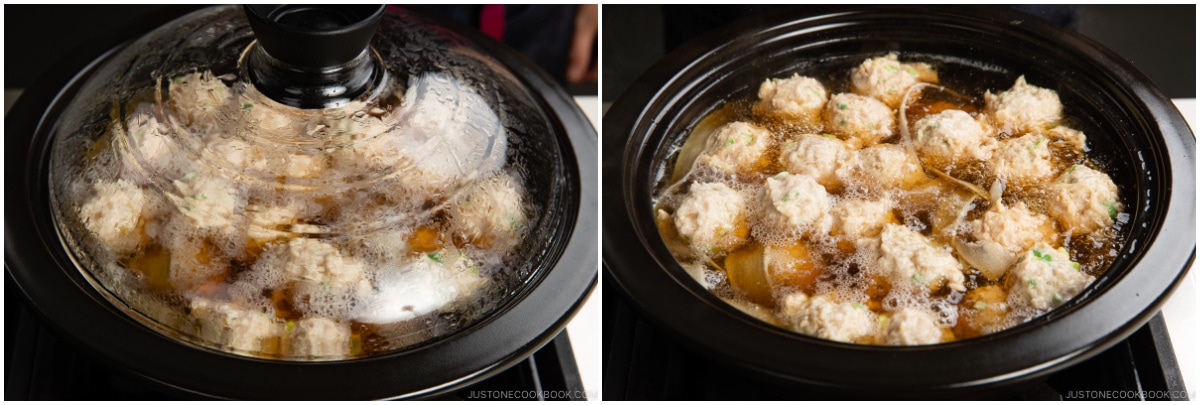
- Once the meatballs are cooked through, remove two-thirds of the meatballs to a plate or container, cover, and set on the dining table. Place the lid back on the hot pot.
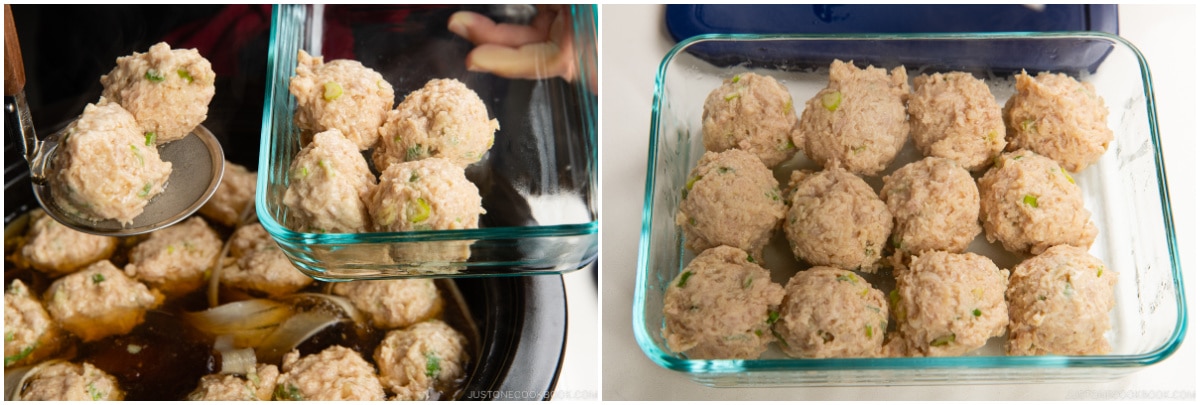
To Cook the Hot Pot at the Table
- Transfer the hot pot to a portable gas stove set on the dining table. Turn the heat to medium low (or to medium, if it takes a long time to simmer) and keep the hot pot simmering. Prepare small individual dipping sauce bowls and medium individual bowls for the cooked hot pot ingredients. Add 2 Tbsp of ponzu and some chopped green onions to each of the dipping sauce bowls.
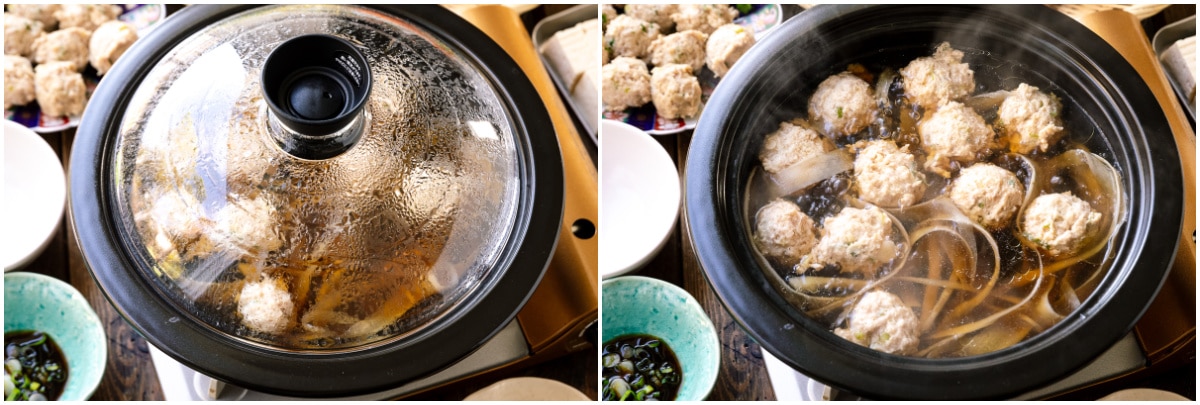
- To the simmering pot, add the tofu, mushrooms, and all the vegetables except for the leafy greens. Close the lid and cook for 8–10 minutes, or until the vegetables are cooked through. Then, add the leafy greens and cover to cook for 2 minutes.
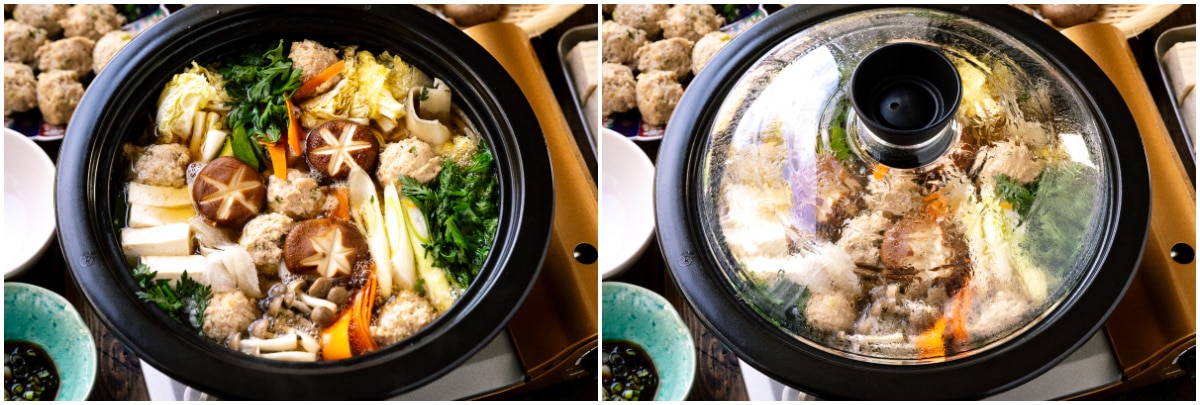
To Serve
- Serve the food to the medium individual bowls. Sprinkle the ponzu sauce with shichimi togarashi (Japanese seven spice), Japanese sansho pepper, and/or yuzu kosho (Japanese citrus chili paste), if desired. Dip the tsukune and other cooked ingredients into the ponzu sauce to enjoy. Continuing adding the reserved tsukune and other vegetables to the broth to replenish the hot pot. Tsukune Hot Pot is delicious served with individual bowls of hot steamed rice.
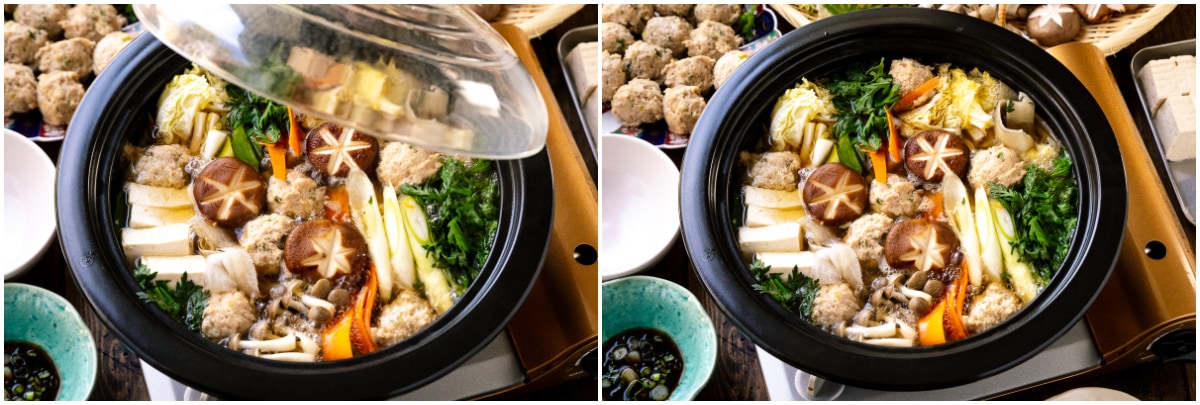
To Store
- You can keep the leftovers in an airtight container and store in the refrigerator for up to 3 days or in the freezer for a month. Tofu does not freeze well, so remove it before freezing the leftovers.
Nutrition
Calories: 456kcal, Carbohydrates: 38g, Protein: 37g, Fat: 15g, Saturated Fat: 4g, Polyunsaturated Fat: 5g, Monounsaturated Fat: 6g, Trans Fat: 0.1g, Cholesterol: 144mg, Sodium: 997mg, Potassium: 1867mg, Fiber: 10g, Sugar: 12g, Vitamin A: 6704IU, Vitamin C: 62mg, Calcium: 398mg, Iron: 5mg